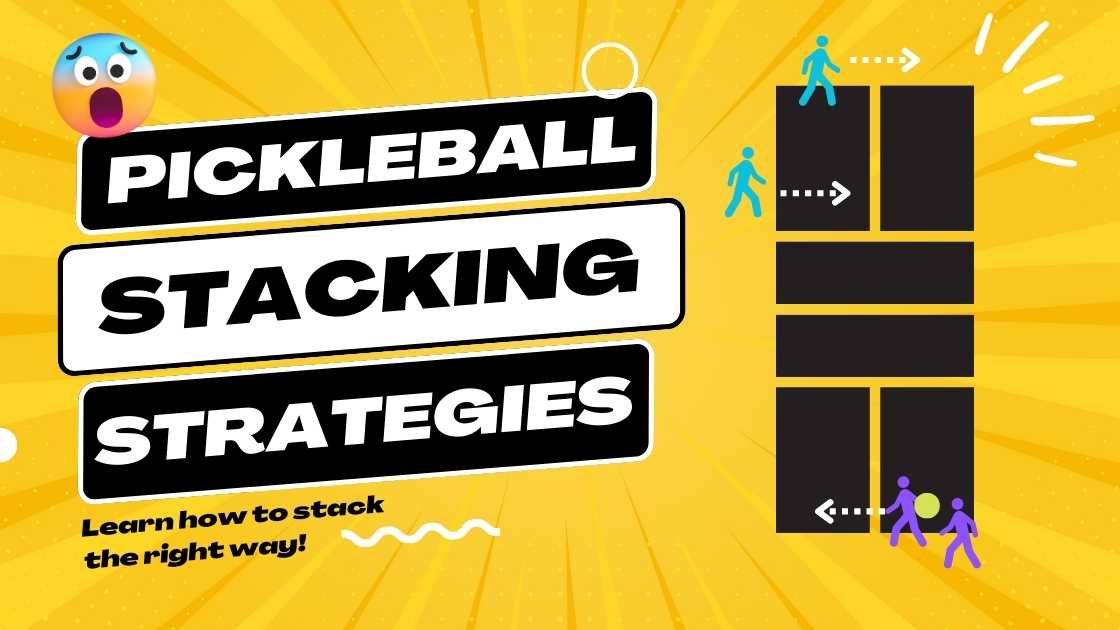
Pickleball Stacking: How to guide and strategies
Have you ever seen pickleball players standing to one side of the court and think, why the heck are they standing like that? This is called stacking, and it’s one of the most important strategies in pickleball. It is a great way to make sure that you’re taking advantage of your strengths and defending against your weaknesses.
What is Stacking in Pickleball
Stacking in pickleball is an advanced doubles strategy where teammates will stand on the same side of the court for the serve or return. After either the serve or return, each player quickly moves to their most favorable side of the court. Stacking can be a strategic advantage and a way to defend your weaknesses.
Why Should You Stack in Pickleball
There are several reasons why you should stack in pickleball and why it is an important strategy to learn and add to your game:
- Stacking allows you and your partner to take advantage of your strengths.
- It provides consistency between points.
- Allows you to defend your weaknesses.
- It can confuse your opponents.
- Can keep forehands in the middle
One of the most obvious advantages of stacking is putting you or your partner in a position to hit your best shots. If you have a better forehand than your partner, it might make sense for you to be on the side that keeps your forehand in the middle. If one player is left handed and the other is right handed, you can have a huge advantage by keeping forehands in the middle.
Stacking also provides more consistency between each point. If you and your partner have decided one of you is taking the right side and the other the left side, you don’t have to worry about playing on that other side. After you serve or return, you get to your side of the court and continue the point. You’ll get a lot of practice hitting the same shots by sticking to one side of the court.
Stacking also allows you to and your partner to defend against your weaknesses. If you or your partner has a very weak backhand, it might be better for them to stand on the side of the court so that their forehand is in the middle. Also, one of your opponents might be attacking a weakness of yours or your partners, like a cross court backhand dink. It might make sense to switch sides to defend against that.
Stacking can be confusing for your opponents, especially if they are not used to playing against it. This can give you an easy advantage and help you win more free points. Stacking won’t be confusing for more advanced players, but it will keep them on their toes!
The best case scenario is that your partner plays with the opposite hand that you do. In this case, one of you is right-handed and the other is left-handed. This allows you to keep both of your forehands in the middle for every point. This can be a huge advantage in doubles because it allows for a better opportunity to poach.
How to Stack in Pickleball
Before you start learning how to stack, it’s important to answer a few questions about you and your partner’s specific skills and attributes.
- Are you or your teammate left handed?
- Do you have a better forehand or backhand?
- Does your teammate have a better forehand or backhand than you?
- Do you or your partner have an obvious weakness or weak side?
- Do you or your partner have any mobility issues?
Being able to answer these questions will help to drive your pickleball stacking strategy. The other good thing about stacking is that if it isn’t working, you don’t need to do it. You can even swap sides with your partner to mix it up and show your opponent something different.
Next we’ll go over different pickleball stacking strategies that you can do with your partner in two different sections. The first section will be stacking while your team is on serve and the second section will be when your team is returning serve.
Pickleball Stacking on Serve
Stacking on serve is important because it allows you to create an offensive scenario for each point and keep the pressure on your opponents. Here are the different stacking scenarios
- Serving from the right side with two right handed players and the server has a better forehand or a weaker backhand than their partner. The server should move left after the serve so their forehand is in the middle. Their partner should stay on the right side.
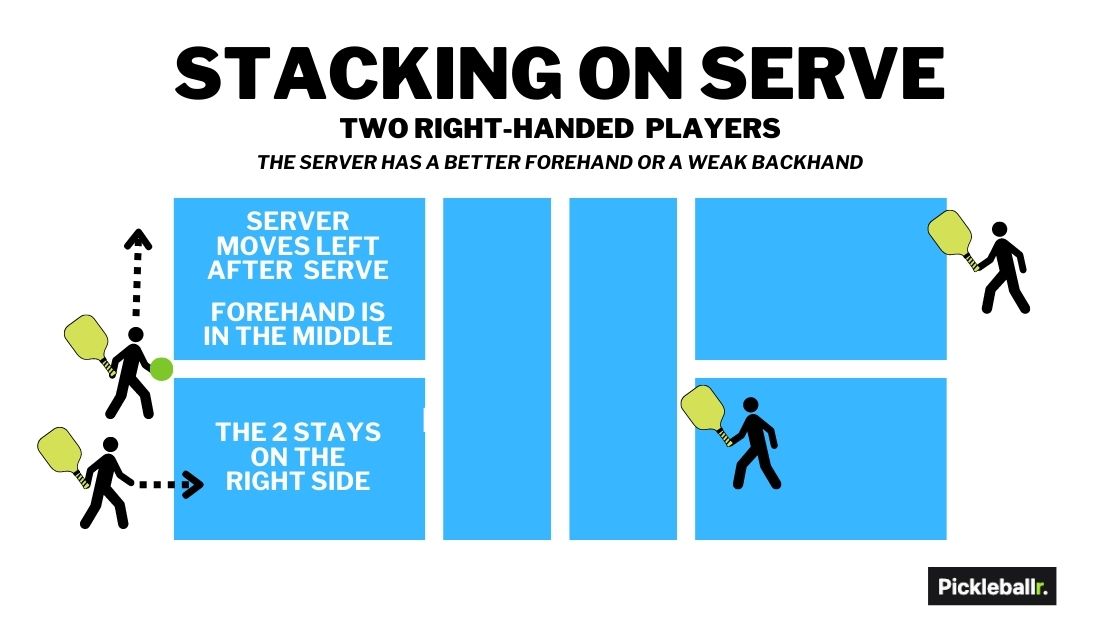
- Serving from the right side with two right handed players and the partner has a better forehand or a weak backhand. The server should move to the right side after the serve so their partner has a forehand in the middle.
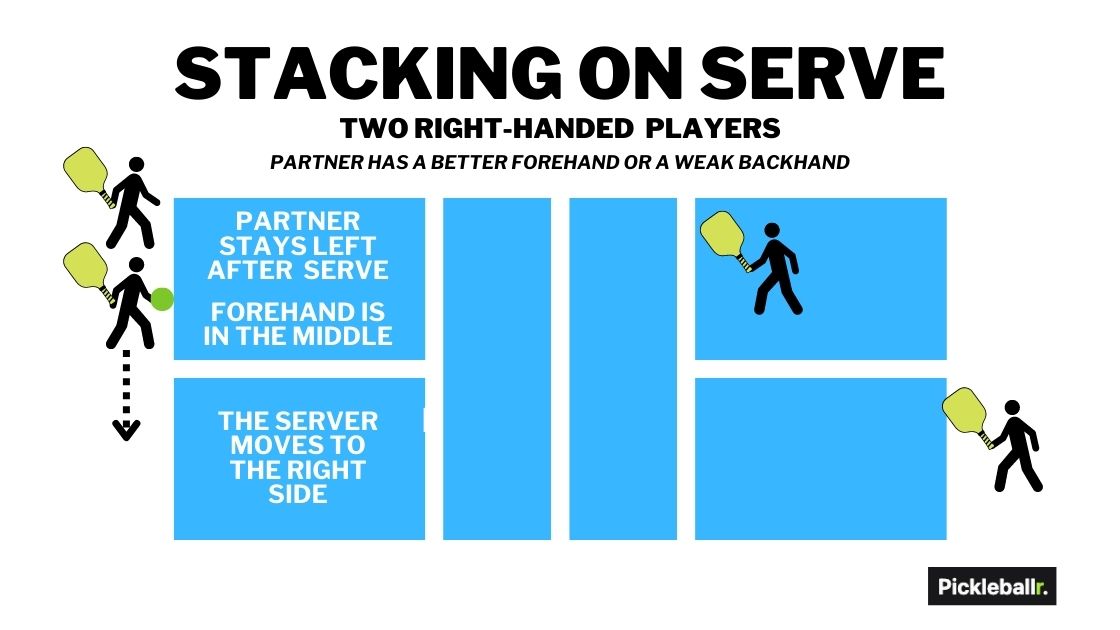
- Serving from the right side with a right handed server and a left handed partner, the server should move to the left side after the serve so both players have their forehand in the middle. This should always be the strategy unless someone has a very weak forehand or must play on a certain side.
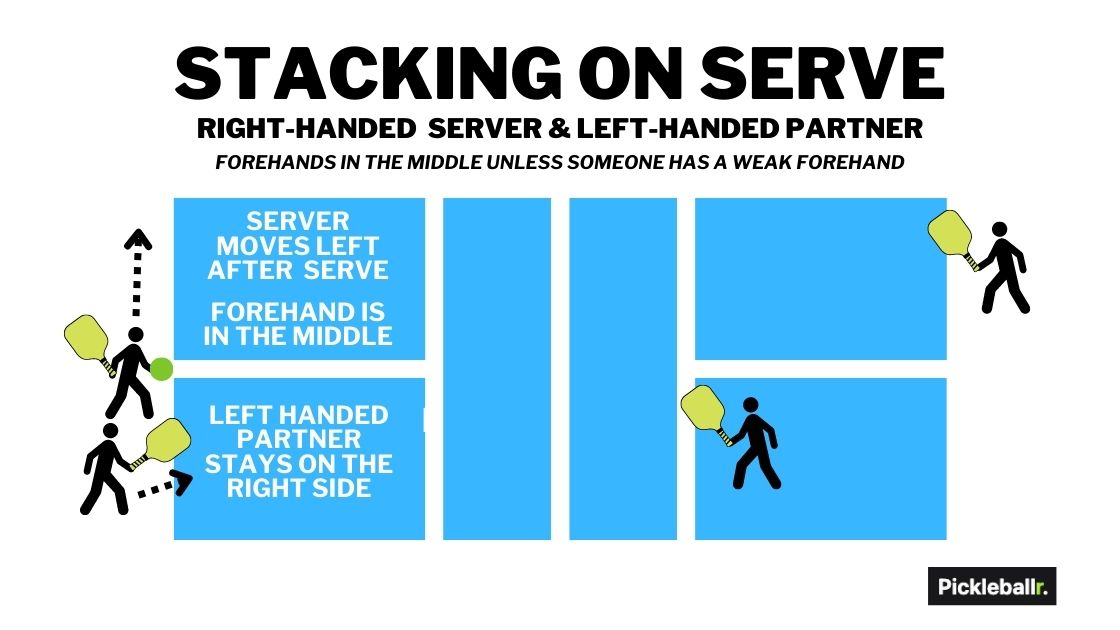
- Serving from the left side with a left handed server and a right handed partner, the left handed player should move to the right after the serve so both players have their forehand in the middle.
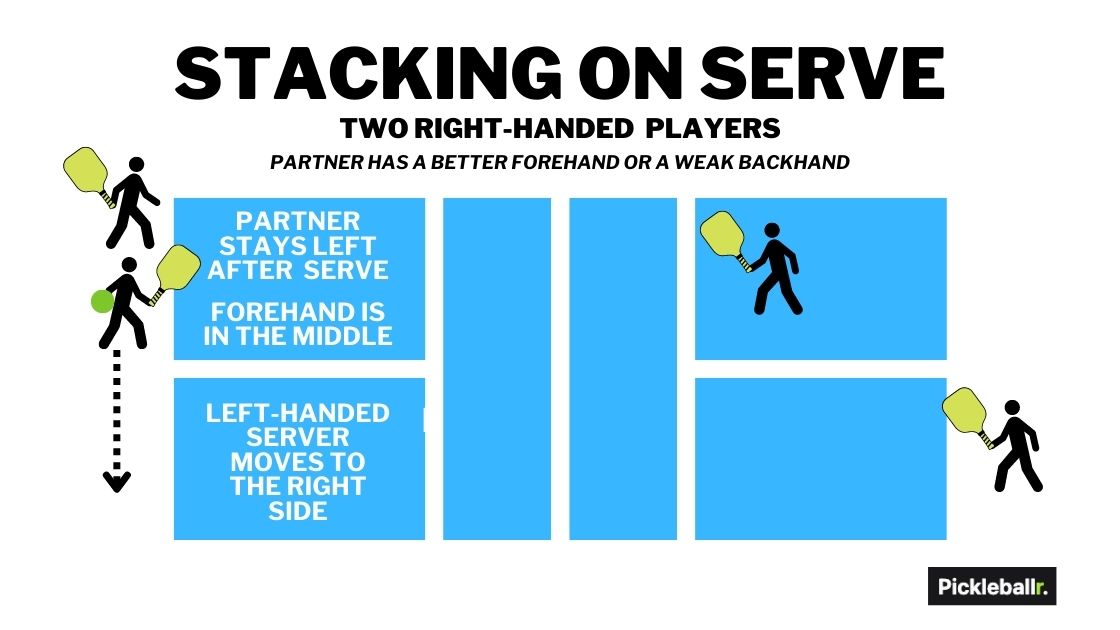
- Serving from the right side with two left handed players and the partner has a better backhand, the partner should move to the left and the serve should stay right and keep their forehand in the middle.
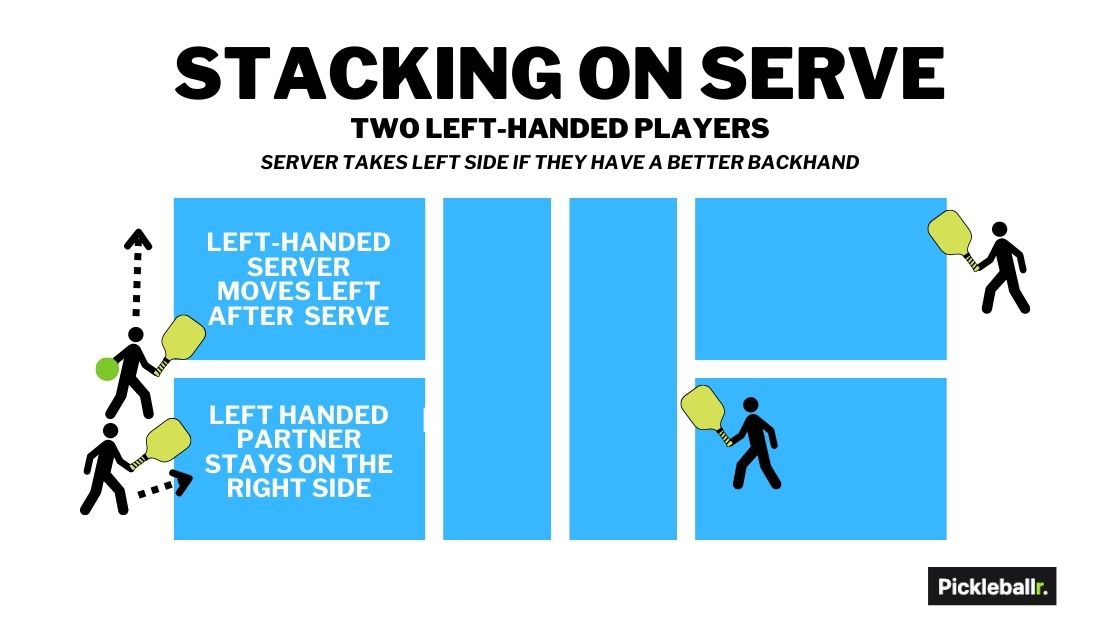
- Serving with the left side with two left handed players and the server has a better forehand or the partner has a better backhand, the server should move to the right side and keep their forehand in the middle.
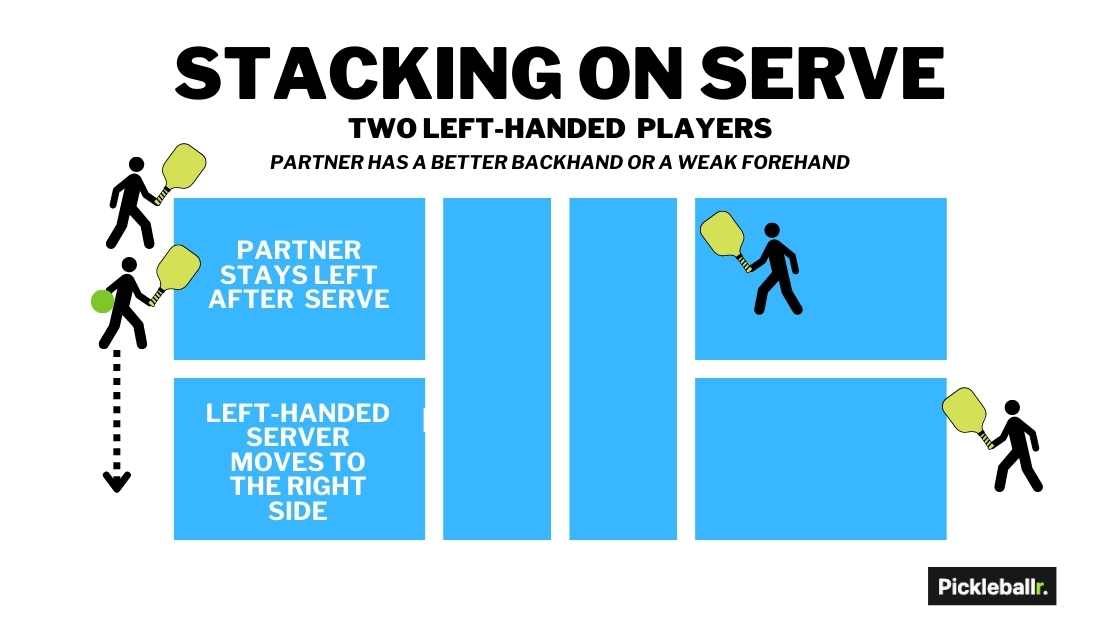
Pickleball Stacking on the Return
A pickleball stacking strategy isn’t just limited to when your team is serving. You and your partner should get comfortable stacking when you’re returning, too. The overall stacking concept is the same, but you have the added flexibility of standing on the sideline and closer to the net. Let’s go over the different stacking strategies on the return.
- Returning from the right side with two right handed players, and the returner has a better forehand or a weaker backhand than their partner. The returner should take the left side after the return and their partner can stand outside the right sideline. They’ll move closer to the middle after the return crosses the net. This is a good stacking strategy if the non returning player has a strong backhand volley and likes to poach.
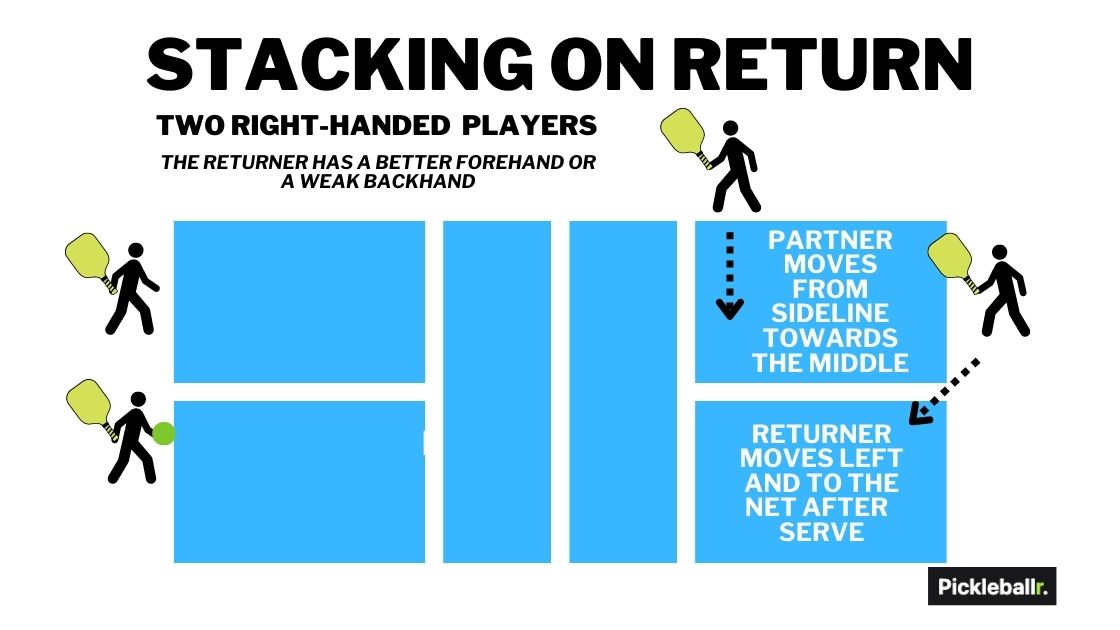
- Returning from the left side with two right handed players, and the returner has a better backhand or their partner has a weaker backhand. The returner should move on the right side after the return and get to the net. Their partner can move from the sideline closer to the center line and the kitchen. If the non returning player has an excellent forehand and likes to poach, this would also be a great stacking strategy.
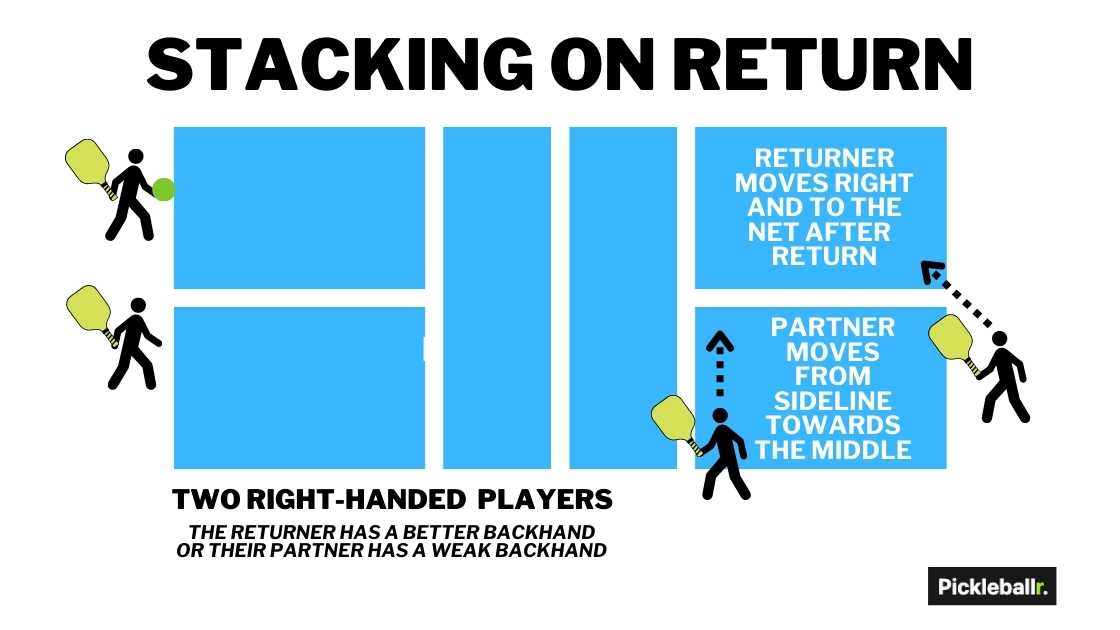
- Returning from the right side with a right handed returner and a left handed partner. The right handed returner should take the left side after the return and move towards the net. The left handed player can stand outside the right sideline and cover the middle after the return crosses the net.
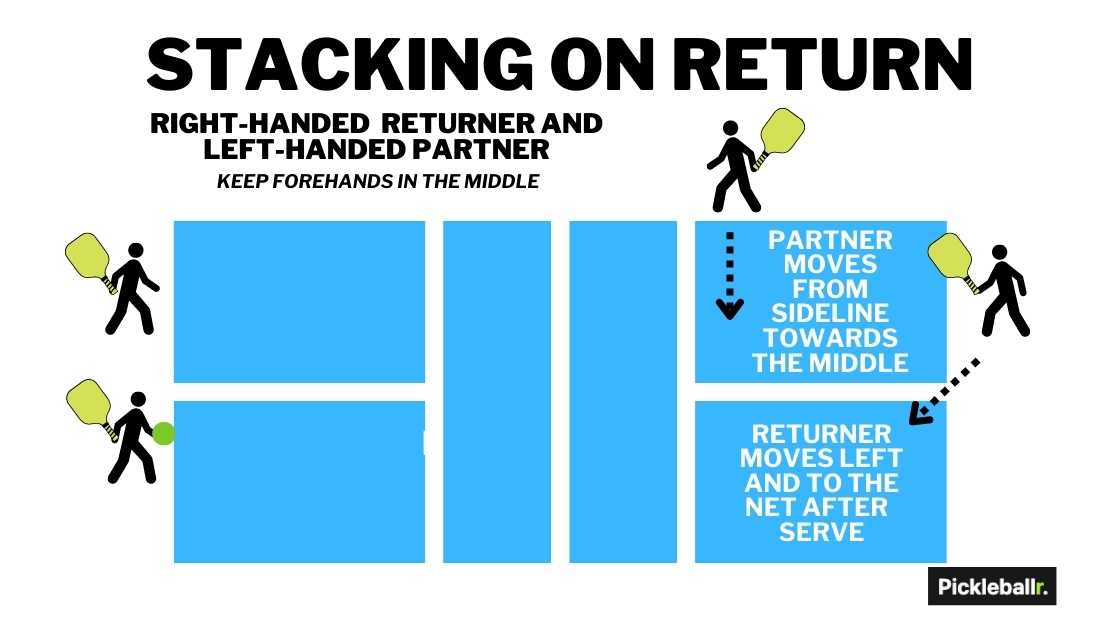
- Returning from the left side with a left handed returner and a right handed partner. The left handed returner should take right side after the return. The right handed player can stand outside the left sideline and cover the middle after the return crosses the net.
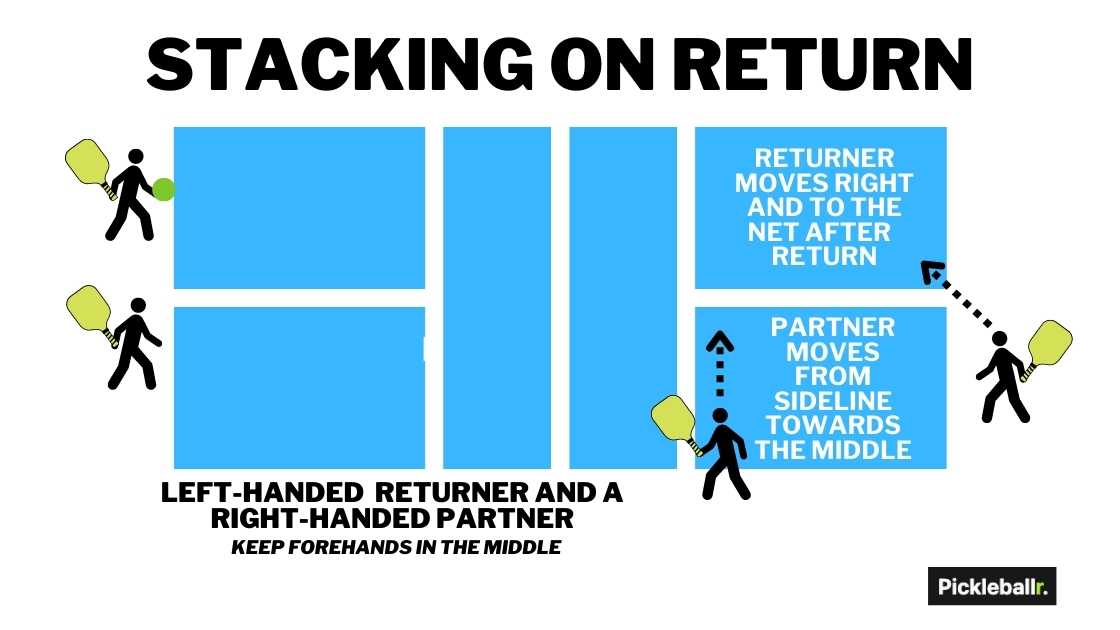
- Returning from the right side with two left handed players and the returner has a better backhand. The returner moves to the left side after the return and goes toward the net. Their partner stands outside the right sideline and covers the middle after the return crosses the net.
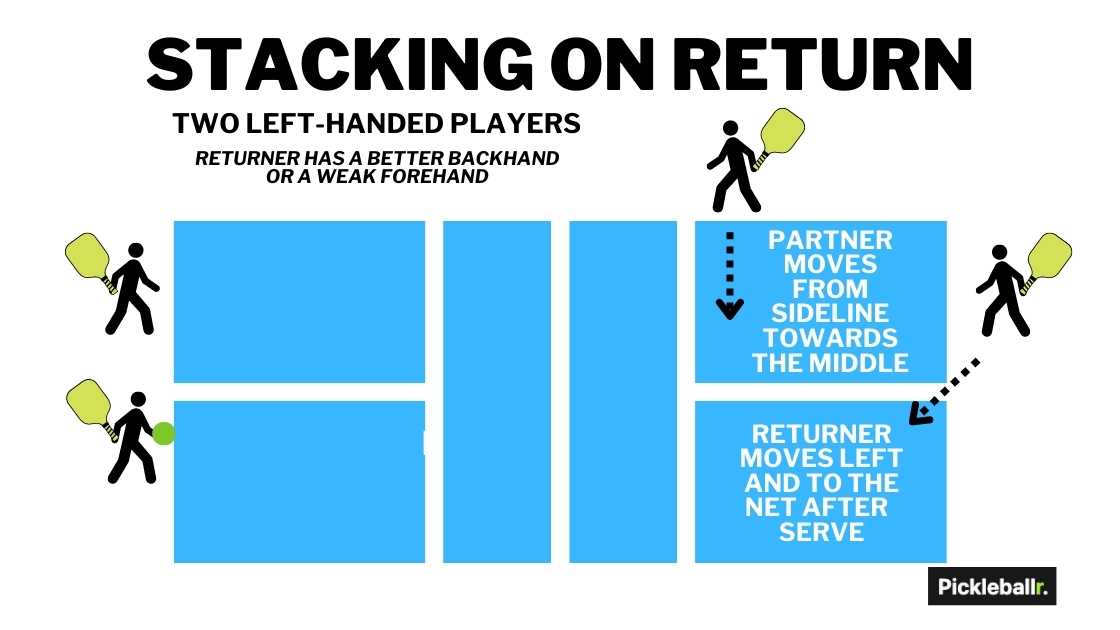
- Returning from the left side with two left handed players and the partner has a better backhand or the returner has a great forehand. The returner moves to the right side after the return and goes toward the net. Their partner stands outside the left sideline and covers the middle after the return crosses the net.
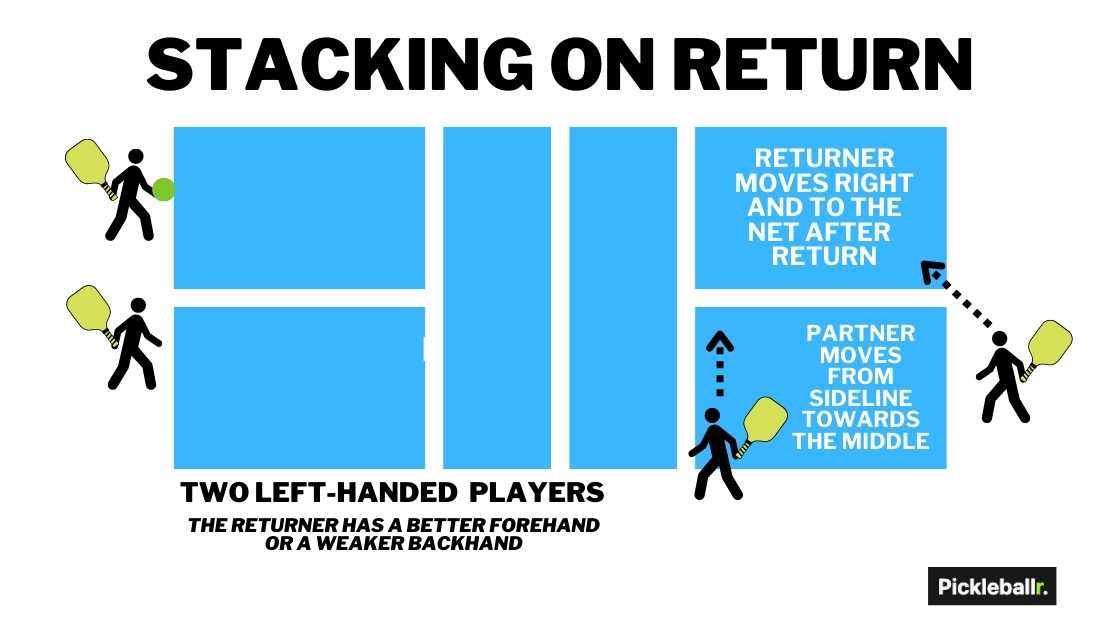
How to Incorporate Stacking Into Your Game
If you want to incorporate stacking into your pickleball game, there are a few things you need to do:
- Know your strengths and weaknesses - It’s important to understand the best and worst parts of your game both at the net and at the baseline.
- Pick a side - You should know which side is your stronger side and which side makes the most sense to be on depending upon who your partner is. If you’re better than your partner, it might make sense to have them play on their stronger side even if you prefer to play there.
- Communicate with your partner - Stacking requires great communication between you and your partner. Talk to your partner after every point and set your plan. Make sure you both understand each others strengths and weaknesses and where you should be on the court.
- Practice - Stacking takes practice to get right, especially when you’re first getting started. Spend some time practicing with your partner to get comfortable with the strategy. It’s important to be at the right place at the right time!
- Be flexible - Stacking is not always the best strategy for every situation. Be flexible and willing to change the way you’re stacking or stick to basic positioning.
Pickleball Stacking Rules
There aren’t any specific pickleball rules to determine how and where you should be standing on the court. There are a few things to remember in order to stay within the rules.
- When serving, your partner can stand anywhere in the court. They still must let the third shot bounce before hitting it.
- The serve must stay within the specified serving area between the sideline and the centerline and behind the baseline.
- The serving team must continue to switch sides after each point if they win the point. You don’t get to pick a side and stay there when you serve.
- The returning team can stand wherever they want on the court. They must let the serve bounce in the service area before returning it.
- The parter of the person returning can stand outside of the sidelines.
- The returning team must return from the same side and can switch after the return.
Conclusion
Stacking is an important strategy to learn and utilize in pickleball. It allows you to take advantage of your strengths, defend against your weaknesses and have consistency between points. We don’t recommend stacking for beginners. Once you’re comfortable with the fundamentals on your strokes and keeping track of the score, it’s time to learn how to stack in pickleball. You should also pay attention when other teams are stacking against you and see what is working for them.